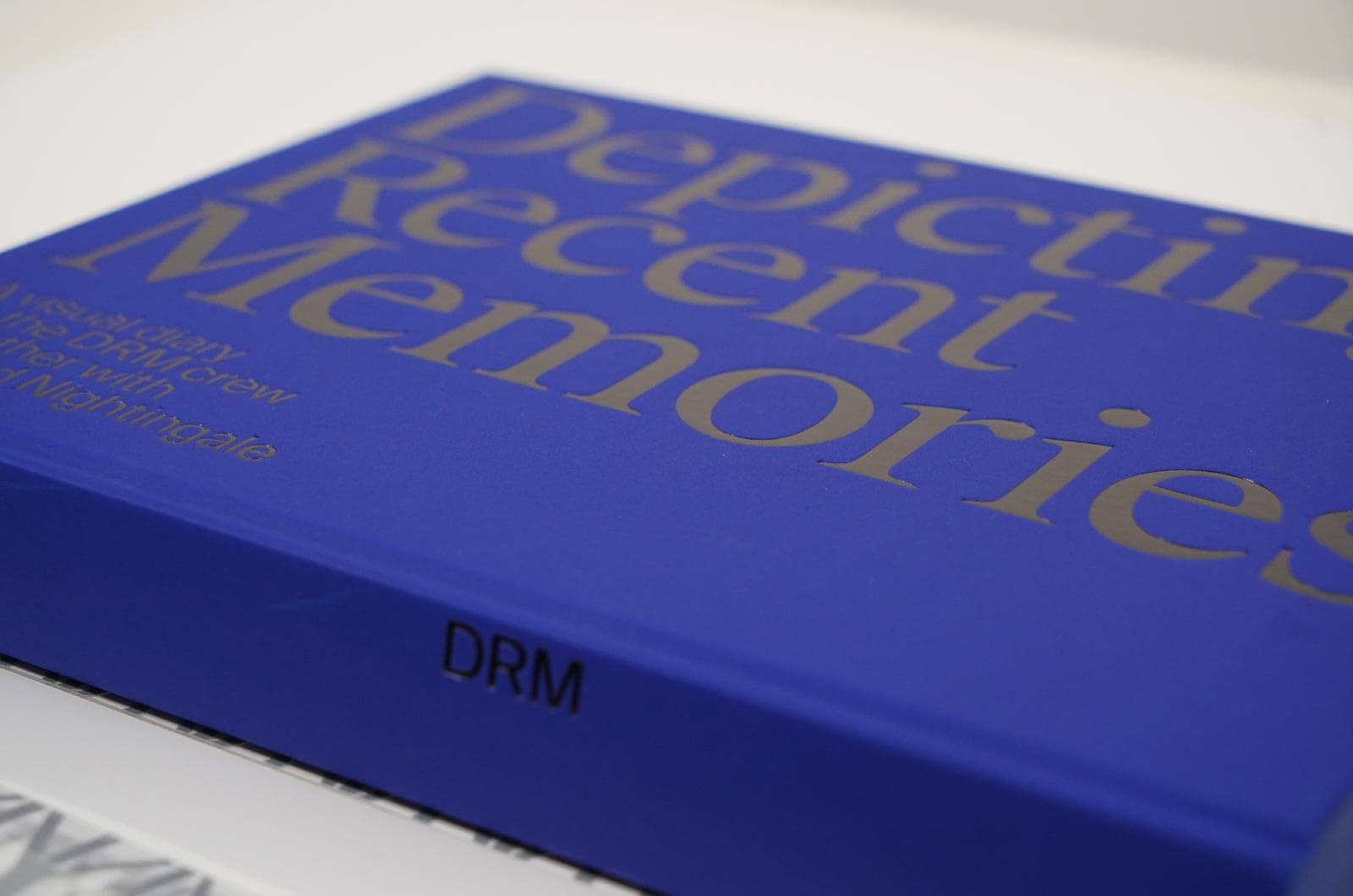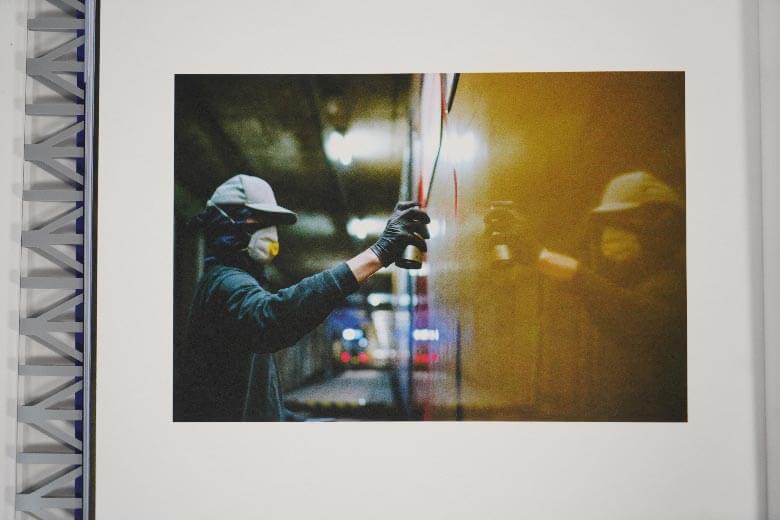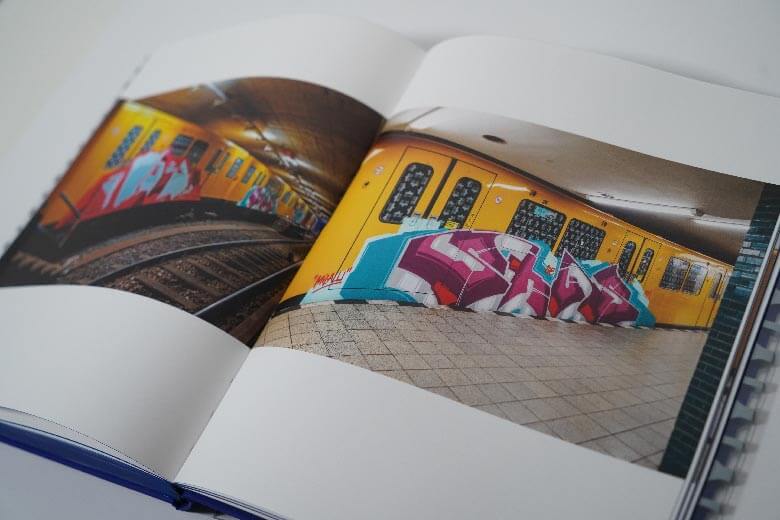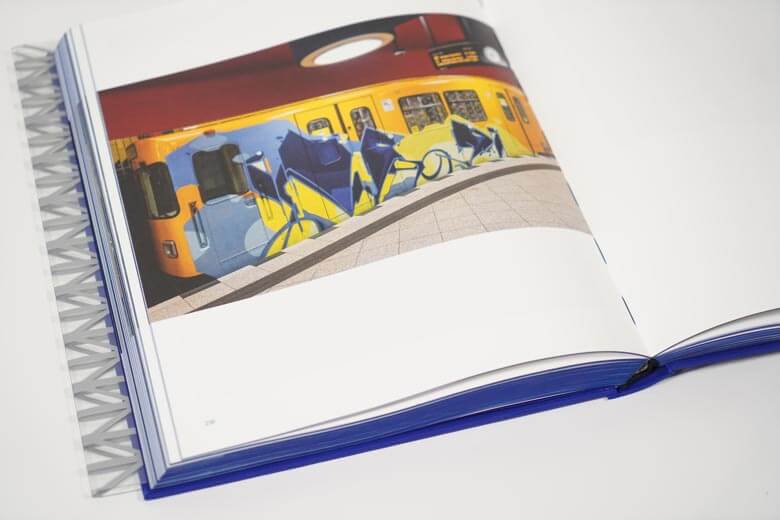
Text by Alberto F. (English translation by Mark Dix)
Following up from the sold-out “You Can’t Always Win”, the latest publication by renowned photographer Edward Nightingale is dedicated to Berlin subway graffiti, specifically to the recent history of the DRM group. MTN World has been lucky enough to get its hands on an advance copy which we break down in this review.
This book is available at Montana Shop Barcelona, Madrid.
First of all, a quick introduction to the main names that feature in the publication.
Edward Nightingale is possibly the best photographer of graffiti on trains today, a field of photography that was established when Alex Fakso published “Heavy Metal” in 2006. The expertise and sensitivity of Nightingale have made him an eminence in the field, thanks to his intense and incessant output that has led him to participate in projects with famous names in international train writing such as Taps and Moses.
In the 1990s, the DRM crew made its name in the Berlin train graffiti elite, evidente in the book “Ruzd79 The Ultimate Blackbook” by Florian Gätcke (2007) which told the tale of the late writer. Among all the secrecy that characterizes the dimension of graffiti on trains and subways in Berlin, the crew has contributed much to the European scene through the work of Azur, Soul and Acid79, in addition to Ruzd himself – writers who established the foundations of what we consider today the traditional style of the German capital also see throughout the rest of the country.
Technical details:
- Measurements: 23 x 29 cm
- Pages: 320
- English language
- Paper weight: 150 g
Background
After a decline in the collective’s activity due to the responsibilities of adult life, in 2016 the DRM decided to go back to doing what they love the most: painting the Berlin subway. The photographer Edward Nightingale accompanied the group on many missions until the year 2020, and the best images were compiled in the book, including the final pieces and the underground context associated with the interventions.


What’s in the book?
The particular collective portrait configured by Edward can be divided into 3 themes, shuffled throughout the book: the underground locations, the photographs in action and the pieces in circulation. Three incentives that, together with different texts, make this publication a complete work that presents in an impeccable and sophisticated way the different dimensions in which this type of graffiti becomes enormously interesting, even in the eyes of non-writers.


The landscape photos provide the highlights of the German photographer’s refined vision, with his peculiar atmospheric and geometric tricks of light. The action flicks immerse us in all the adrenaline and pleasure of the missions and the pieces are photographed with a perfect balance between the visibility of the work and the photographic composition full of meaning and poetry.
If this weren’t enough, the book stands out because of the quality of unpublished graffiti included in the volume.


The texts are written with a marked poetic character, evoking the complicated feelings of the conflict between a misunderstood passion and the commitments of life in society: heartbreaking emotional autopsies, not suitable for all readers, that explain the balance between melancholy and self-improvement.


Design Details
The Deutsche & Japaner studio is in charge of shaping this editorial production and it does so in a sensational way: an impeccable layout that gives prominence to the images, whilst granting importance to the texts with its clever design , previously unseen in books like this.

A blue hue frames the book, a direct reference to the particular blue fluorescents that you find in the underground parking lay ups of Berlin, but also to International Klein Blue, thus making a nod to the concept of “action painting” in contemporary art. The book is covered by a plastic cover decorated with a border that mirrors the grille of the vents, giving a point of sophistication to the intricate cover that includes reliefs and different finishes.
The publication comes wrapped in elegant black paper that suggests a work of art whose value will surely appreciate when it sells out.


The quality of the presentation and materials easily justify the book’s price tag.
- The best thing about it? As well as the technical quality of the publication which allows you enjoy the photographs in a unique way, the book includes unpublished pieces by Mad whose style makes you travel through time and space.
- And the worst? Although the book is full of pieces, you’re left wanting more!




2 What do you think?
Add a comment